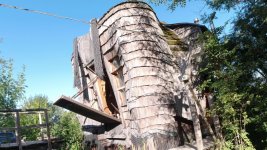
The trouble with suggestive headlines is that they work best when they have no context and you can make your own (presumably wrong) assumptions.
So, for an article in some random travel page, "Getting high in the Netherlands and making good use of a Trojan for backdoor entries in Belgium" would make a good teaser.
But, given that this is about me and traveling, it is too obvious that "getting high" refers to altitude and the backdoor entry is to a Trojan Horse.
Which, admittedly, is still a bit weird, but not quite as kinky as the double entendre was trying to make it sound.
There's a lot of ground to cover, given that it was one week of vacation.
So, let's get started.
And get started at the beginning.
The whole trip was a side-effect of what I had planned for my birthday this year.
(And what became of that is described in lots of detail here.)
I had invited my sister and her husband to the Zeppelin flight on my birthday in Friedrichshafen, but this didn't work out. For a while it looked like at least Claudia (my sister) would be coming, but then Lufthansa cancelled her flight out of Friedrichshafen. That screwed up my sister's schedule completely, so she wasn't able to come to my birthday.
On the other hand, I had booked the Zeppelin flight in Friedrichshafen for 12 people and two hours.
Due to hygiene precautions, they were only able to take eight passengers on board. (By the time the flight happened, that rule had been relaxed again and they could have taken twelve passengers again, but nobody knew that at the beginning of June.). So there were four seats on the two-hour flight that I had paid for, but didn't use.
While the base of operations for the Zeppelin flight is Friedrichshafen, they sometimes take the Zeppelin to other places and offer sightseeing flights from there. And they would be in the Cologne area (where my sister lives) in September. And they did offer a sightseeing flight over the Cologne Cathedral, which lasts one hour.
Claudia called the Zeppelin company and suggested a deal: How about taking the four two-hour bookings in Friedrichshafen and turn them into eight one-hour bookings in Cologne?
For me, it would be (kind of) a second birthday event. And for Claudia and Roberto (her husband) it would not only be much easier to get to than Friedrichshafen, but it would also be a sightseeing flight over places they knew. Also, in case there would be a cancellation due to weather or some other reason, there wouldn't be any significant travel involved on their side.
And the Zeppelin company was accommodating and agreed to that.
As a result, I knew that I would have to be in Cologne (well, technically at Bonn/Hangelar Airport) on Sept, 6th.
I figured I could go there for the weekend, stay with Claudia and Roberto. But as there wasn't anything else interesting going on, it seemed like a good idea to take a full week of vacation and stuff that full of 'unusual places to stay'. And add some 'odd things to do' as well.
The primary 'reason' for that was that, in case the Zeppelin flight got cancelled, there would be at least something else to do. And the trip would not hinge on a single event. Realistically though, I was bored and it's not like I need a proper reason to have a vacation and do strange things.
So I checked for uncommon places to spend the night in the area and found out about 'Via Ferrata' in Brühl.
Brühl isn't even close to any cliffs or mountains, so it's not a natural location for a via ferrata.
But what it does have is buildings. Specifically, an old grain storage next to railroads.
And, like cliffs, buildings are excellent at providing vertical surfaces.
So they constructed something akin to an 'climbing park' in the woods. But while those parks have their different stations more or less at the same height, here every traverse is followed by an upwards climb.
There are three courses to choose from.
The first one goes up to about 20 meters. A second one, on the same side of the building, goes up to the top at 50 meters. And, on the smaller side of the building, there is another, more difficult one, that goes to the top as well.
The climbing bit is hard. In most 'climbing parks' you have the main climb at the beginning (often a simple ladder), so you got the tiring bit out of your way. Here you go up half of the time. And in many place it's harder than simply climbing a ladder. Additionally, the nasty thing is that they use one of the safety systems that you slide in at the beginning and slide out at the end, so you can't leave the route somewhere in the middle. And you can't let people pass by. So if you are exhausted and want to take a long break somewhere, people behind you will get annoyed.
But in any case - climbing up the side of the building wasn't why I was there for anyway.
The thing I was looking for (and forward to) was at the right side of the building, just under the top.
A portaledge.
Which is, essentially, a tent that you hang from the side of a cliff (or, in this case, a wall).
On my birthday the previous year, I stayed in a kind of 'deluxe version' of a portaledge. I spent the night at the Skylodge in Peru. And I had been wondering what it would be to stay in a 'real' portaledge.
And here was my chance to find out without having to be a proper mountain climber, but still with a sense of height. (Of course, you can put up a portaledge two meters above the ground. But it wouldn't be the same experience at all.)
To get to the portaledge, you don't need to climb up the wall. There's a staircase inside the building, which you can take. (But no lift - that would be too easy.)
Although I didn't climb up the wall, I at least walked down on it.
They offer wallrunning (which is the reason why the left side of the main wall is devoid of climbing elements).
And, once a month, they offer wallrunning at night.
I had booked my 'portaledge night' on one of the days with noctual wallrunning, so I had a go. While I'm not fond of vertical climbing, I like wallrunning (well, at least I liked it the only time previously I did that). At least (like with abseiling or ziplining) gravity is on my side!
Going down the side of the building was fun. But that doesn't translate into interesting pictures.
For one thing, it's dark. So there is not much to see anyway.
But you also have no sense of orientation. Unless you know what you're looking at, it looks like some jogging track somewhere, with a streetlight shining at the upper right.
It is a bit like the inverse of the old Adam West Batman TV series.
In that series, they often showed Batman and Robin climbing up some skyscraper with the 'bat rope' by having them walk (slightly hunched) across the set while pulling themselves along with a rope, anchored somewhere out of frame. And then the producers employed the 'special effect' of turning the camera 90°, so it would (kind of, vaguely) look like they would 'upseil' (to coin an antonym of 'abseil') the side of the building.
While, in my case, I was actually walking on the side of a building (albeit downwards), but on the picture something that is exciting, look pretty much like a night walk in the park.
After dinner it was time to climb into the portaledge.
It turned out to be more comfortable than I expected.
I had assumed it would be more sagging (like a hammock, but with a roof).
But the portaledge has a sturdy aluminium frame around the bottom to which the floor is attached. With a sleeping pad on it, it feels as sturdy as the bottom of a tent. And more comfortable, as you are not bothered by uneven ground under the tent.
And it surprisingly stable. Yes, it 'leans' against the wall for support, but, ultimately, it is attached at a single point at the top. So I had expected it to be more affected by winds. While not stormy, it got a bit windy at night. It was 'fluttering' the walls of the portaledge, but the base of the 'tent' didn't move. There also wasn't much motion when I moved around in the portaledge. Unexpected, but nice.
What didn't work out that well was - sleeping.
Until about 2 am, that was expected. I was too excited to sleep.
After all, it is an unusual place to spend the night.
When I finally got tired and tried to sleep, I noticed a couple of issues.
Like the fact that three of the walls of the tent are (plastic) panorama windows and the train maintenance facility, right across the tracks, was lit with floodlights all night. And they were also working all night, with trains going in, out and passing by all night.
So, if you're looking for something dark and quiet, you'll probably need to head for some real cliff in the mountains somewhere.
Still, not too bad. I had taken an MP3 player into the portaledge with me, so after I plugged the (disconnected) headphones into my ears and repurposed a mouth-and-nose mask by shifting it up a bit and using it as an eye mask, it wasn't any brighter or louder than sleeping at home.
Temperature regulation is a bit trickier. There is a sleeping bag, but you can't properly close it, as you're sleeping in your climbing gear and are attached to a rope at the top. So you keep the sleeping back half-open and (sort of) wrap the upper part around you. And while the plastic tent is a bit like a greenhouse and warms up quickly, there are also a couple of ventilation bits at the bottom. When the wind starts blowing, it's like a warm room with a highly localized cold draft going through it.
All minor things - I assume that, if you're hanging halfway up a big wall at Zion, drafts are the least of your worries. And you're likely carrying an open portaledge (the platform, without the 'tent') and no sleeping bags, to save some weight. So 'comfort' is not high on the list of specifications. (But then, if I had wanted comfort, I could have chosen a regular hotel room instead.)
It took me a while to arrange stuff into some sleeping arrangement (it might have helped if I had climbed the via ferrata - I would have been tired and fallen asleep immediately) and I dozed off around 4 or 5 am.
When I got up and left the portaledge a few short hours later, I was excited and happy that I had spent the night there, but the pictures show that I am not that well rested.
Breakfast was back on solid ground and then it was time to visit my sister and her husband.
Initially, the idea was that after the portaledge, I would have two nights in their guest room, where I could sleep comfortably and without worries.
I slept well there, but things were a bit trickier than anticipated.
They had found that there was a wasp nest somewhere under the roof and that the wasps had found a way into the guest room. Luckily for me, wasps die off in autumn and they aren't active at night.
The wasps that were in the room during the day were sluggish and dying and not much of a bother. Before going to sleep, I vacuumed one or two dozen dead wasps of the floor and didn't see any new ones the next morning. But knowing that the wasp nest was nearby made sleeping there a bit of an adventure than I had expected.
Then it was time for the Zeppelin flight.
We were all fairly relaxed this time. I had wanted my 'birthday flight' happen on my actual birthday, so I got a bit anxious about whether it would all work out. But this was an arbitrary date now. So if it wouldn't work out, that would be disappointing, of course. But we could try again the next time the Zeppelin would be in the Cologne area. Also, the 'travel effort' was small for most. Claudia and Roberto live pretty much across the Rhine from that airport. And my cousin (who had already been on the Zeppelin flight in Friedrichshafen, but this time brought both of her children) lives about 60 km away. And I already did my portaledge night and had other things planned for the trip as well, so it wasn't only the Zeppelin flight in my schedule. So if things wouldn't work out, we'd be a bit grumpy, but that's about all.
The short straw went to Constanze. We have been on a number of dogsledding tours over the years (twice in Canada, once in Finland and a couple of times in Sweden) and I had invited her to my birthday.
But then Covid regulations made travel between the UK and Germany difficult. Many flights were cancelled and even a short trip to Germany would have resulted in a two-week quarantine for her. But she had planned to be in Germany in September for a number of reasons - including participation in the 'Kiel Lauf', a half-marathon in Kiel, which then had been cancelled. So she was in Germany at the time, which made travel to Cologne easier.
It was still a long trip for her, as Kiel is not even close to Cologne, and she travelled there solely for the Zeppelin flight and went back to Kiel right afterwards. So if the flight hadn't happened, she'd be the one to bear the biggest frustration. (But then, it's like with dogsledding. Weather happens. And if things don't work out due to weather, that's the way it is. No point in getting angry about it.)
Things did work out, though. And everyone was happy.
In a graceful curve, the Zepplin came in to land.
We hadn't realized what a close call it was. The weather forecast for the weekend had looked ok, so I hadn't worried much. And when I got up in the morning at Claudia and Roberto's place, I could see the Zeppelin flying in the distance. But when we boarded the flight, they mentioned that they had to cancel all flights from Mönchengladbach in the preceding three days. And that's about a hundred kilometers away, so it's not really a different weather zone.
Like back in June, where they had no flights in the week before my birthday and only managed a limited number of flights on Saturday, the day before my birthday, we got lucky again and on Sunday all flights were on schedule.
As Bonn Hangelar was not their home base, the set-up was a bit more improvised. No pre-flight info movie and no 'departure lounge'. But, on the other hand, more stuff to see, as the 'mechanics' weren't as hidden. (For example, they have a surprisingly large amount of helium tanks on standby to 'top off' the gas in the Zeppelin that is lost due to diffusion through the hull.)
Time to board the Zeppelin and take off.
For the pictures from the flight I'll be using the same format as for the birthday flight. A thumbnail of the picture, a short indication what it shows and a link to Google Earth where appropriate.
And go back to 'commentary mode' after that.
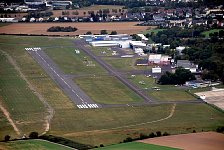
|
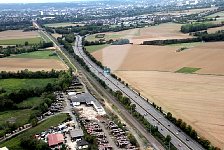
|
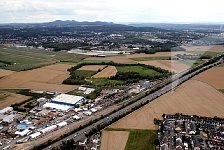
|

|
| View of Hangelar Airfield | Highway near Hangelar Airfield | Looking back to Hangelar Airfield | Meindorf |
| View with Google Earth | View with Google Earth | View with Google Earth | View with Google Earth |
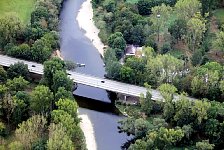
|
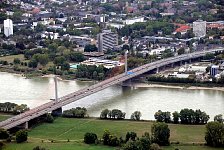
|
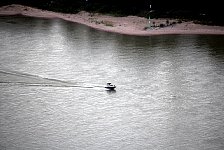
|

|
| Bridge over the river Sieg | Rhine bridge in Bonn | Speedy boat on the Rhine | River Sieg close to the Rhine |
| View with Google Earth | View with Google Earth | View with Google Earth |
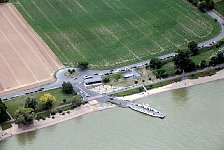
|
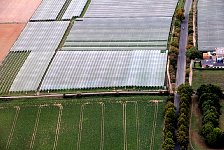
|
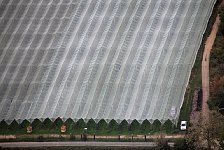
|
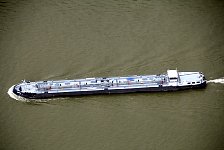
|
| Rhine ferry Mondorf | Apple farm | Apple farm | Freight ship on Rhine |
| View with Google Earth | View with Google Earth | View with Google Earth |
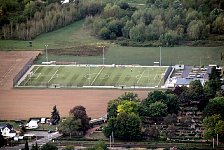
|
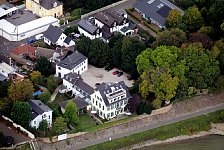
|
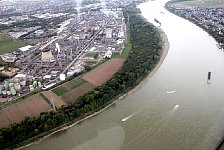
|
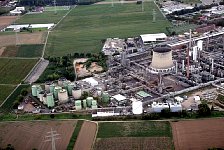
|
| Hersel football field | Urfeld | Rheinland Raffinerie Wesseling | Rheinland Raffinerie Wesseling |
| View with Google Earth | View with Google Earth | View with Google Earth | View with Google Earth |
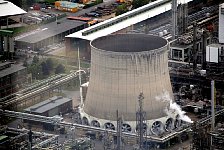
|
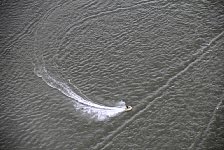
|
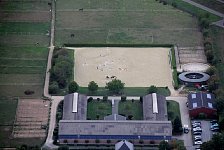
|
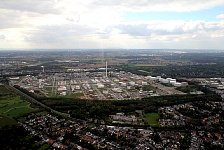
|
| Cooling tower | Jetski on the Rhine | Horse riding parcour | Rheinland Raffinerie Godorf |
| View with Google Earth | View with Google Earth | View with Google Earth |
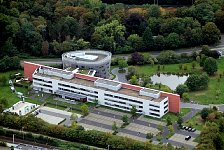
|
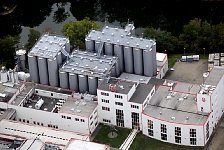
|
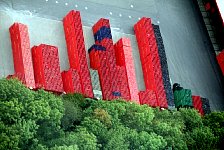
|
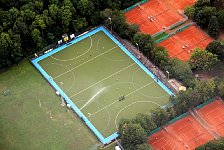
|
| Advertising company | Reissdorf Kölsch Brewery | Beer bottle crate 'skyline' | Wet football field |
| View with Google Earth | View with Google Earth | View with Google Earth | View with Google Earth |
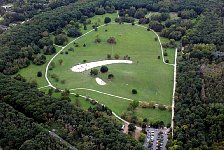
|
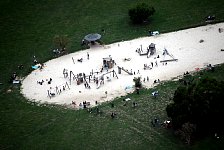
|
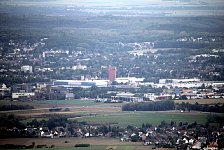
|

|
| Botanical Garden | Botanical Garden playground | Via Ferrata tower in Brühl | Golf course Marienburg |
| View with Google Earth | View with Google Earth | View with Google Earth | View with Google Earth |
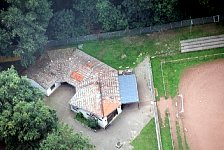
|
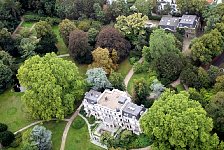
|
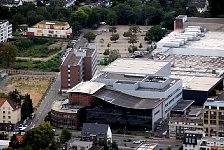
|
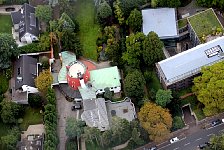
|
| Football clubhouse | Villa Gerling | Leybold Engineering | Polish Embassy |
| View with Google Earth | View with Google Earth | View with Google Earth | View with Google Earth |

|

|
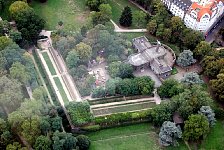
|
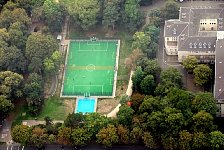
|
| Office blocks | Cologne community garden | Cologne peace park | Football field at Polytech campus |
| View with Google Earth | View with Google Earth | View with Google Earth | View with Google Earth |

|
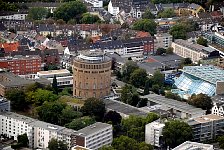
|

|
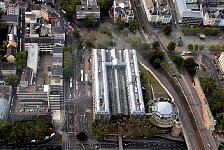
|
| Bayenturm | Hotel in Watertower | Chocolate museum | Maritim Hotel |
| View with Google Earth | View with Google Earth | View with Google Earth | View with Google Earth |
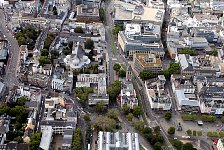
|
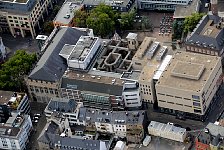
|

|
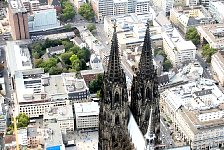
|
| St.Maria Church | St.Alban Church ruins | Cologne Cathedral | Cologne Cathedral |
| View with Google Earth | View with Google Earth | View with Google Earth | View with Google Earth |
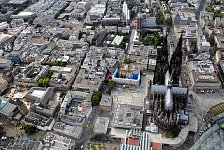
|
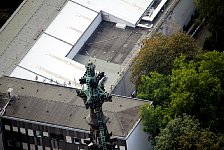
|

|
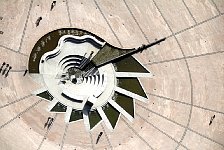
|
| Cologne Cathedral | Cologne Cathedral | Mediapark | Mediapark |
| View with Google Earth | View with Google Earth | View with Google Earth | View with Google Earth |
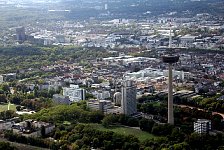
|
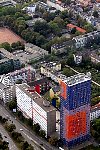
|
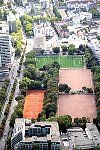
|
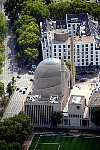
|
| TV Tower | Herkules skyscraper | Sports area | Cologne Mosque |
| View with Google Earth | View with Google Earth | View with Google Earth | View with Google Earth |

|
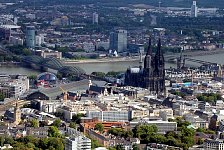
|
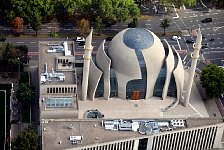
|
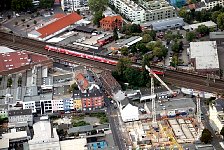
|
| Cologne skyline | Cologne Cathedral | Cologne Mosque | Train near Ehrenfeld station |
| View with Google Earth | View with Google Earth | View with Google Earth | View with Google Earth |
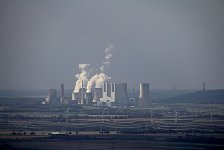
|
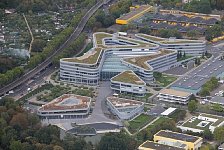
|
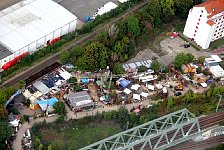
|
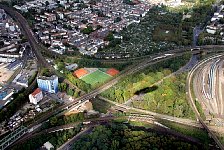
|
| Neurath Power Station | RheinEnergie building | Odonien cultural center | Zeppelin shadow |
| View with Google Earth | View with Google Earth | View with Google Earth | View with Google Earth |
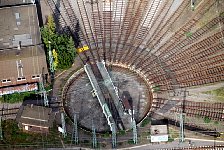
|
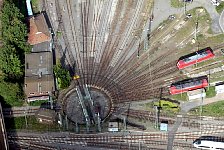
|
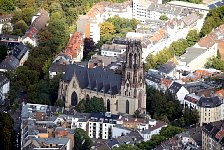
|
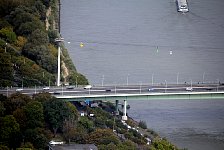
|
| Railway work yard | Railway work yard | St.Agnes Church | Zoo bridge |
| View with Google Earth | View with Google Earth | View with Google Earth | View with Google Earth |
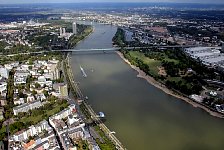
|

|
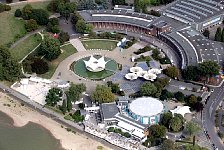
|
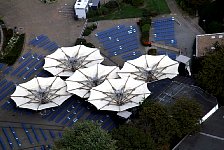
|
| Zoo bridge | Rhinepark playground | Tanzbrunnen | Tanzbrunnen |
| View with Google Earth | View with Google Earth | View with Google Earth | View with Google Earth |
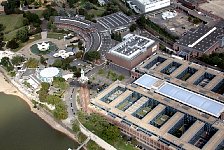
|

|

|
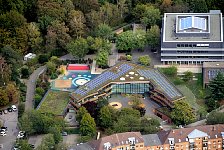
|
| Rheinhallen | Lanxess Arena | Deutzer Hafen | Köln-Kolleg |
| View with Google Earth | View with Google Earth | View with Google Earth | View with Google Earth |
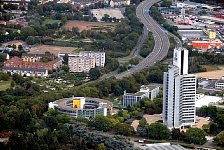
|
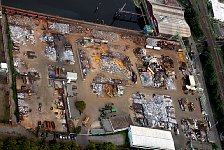
|
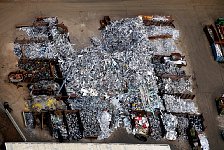
|
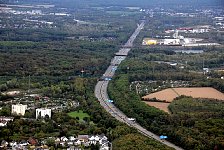
|
| TÜV Rheinland | Junkyard | Junkyard | A4 highway |
| View with Google Earth | View with Google Earth | View with Google Earth | View with Google Earth |

|
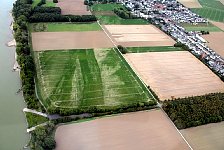
|

|
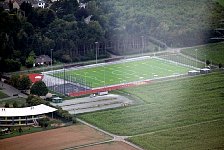
|
| Sürth | Field near Zündorf | Plane landing at CGN airport | Europe/US football field hybrid |
| View with Google Earth | View with Google Earth | View with Google Earth | View with Google Earth |

|
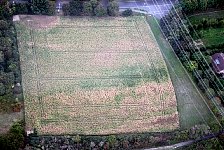
|
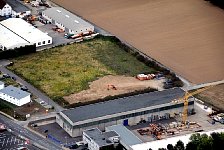
|
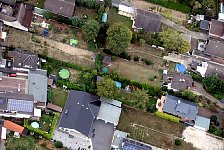
|
| Niederkassel gravel lake | Partly withered field | Construction site | Pools and trampolines |
| View with Google Earth | View with Google Earth | View with Google Earth | View with Google Earth |
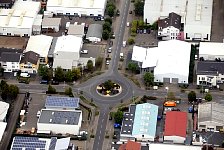
|
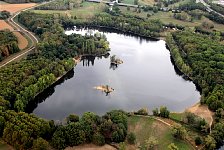
|
||
| Roundabout Mondorf | Sieglar Lake | ||
| View with Google Earth | View with Google Earth |
A short time later, we were back on the ground and it was time to disembark, wave the Zeppelin goodbye and watch it leave for its next flight.
Then it was back to Claudia and Roberto's place.
Later that day, we had a last view of the Zeppelin as it passed by outside.
This is the flight path we took:
To make following the flight easier, here it is as a Google Earth file.
We covered a distance of 63 kilometers, were airborne for 57 minutes at, most of the time, an altitude between 300 and 350 meters above the ground. As in Friedrichshafen, we were slower outbound than inbound (63 km/h towards Cologne, 70 km/h back to Hangelar airfield), but it is not clear whether that was due to the wind speed and direction. Or whether they intentionally go slower when heading out and then make up the time on the way back, when they cover ground that they already flew over.
Next day, I was on my way to Harlingen in the Netherland to visit something a lot more massive than a Zeppelin - a crane.
I don't have much interest in cranes (or other heavy machinery) as such. But this one had a special feature: Its former machine house had been turned into an apartment, so it was possible to spend the night in the crane.
Entering and leaving the apartment already felt like something out of a Bond movie.
While the first elevator is simply a box-like thing that takes you to the first platform, they couldn't attach a regular lift to the outside of the crane section, as that would keep the crane from being able to rotate.
Originally, the crane driver (presumably) ascended on ladder within a large vertical metal tube in the center.
As climbing things isn't most people's idea of getting to their vacation home (and because it's much cooler they way it works now), they replaced the ladder with a 'lift' inside the tube. You step onto a round platform and operate the lift switches with your feet. Getting up into your room feels a bit like a rocket launch - although significantly slower.
In any case, riding that lift is fun. I used that lift a lot more often than strictly necessary...
The other neat thing about the harbour crane is that it is still (partly) operational. If you don't like the view from your room, or if you want to watch the sunset, you can climb into the operator's cabin and turn the crane around.
(Note that it doesn't zip around that fast. The video has been sped up by a factor of 40 or so. It's a harbour crane, not a turret.)
What doesn't work is the crane mechanism itself. There are two good reasons for this. The technical reason is that the machinery to lift the crane is no longer there, as the machine house has been turned into an apartment. And you don't want to encourage tourists to pick up cars that are parked at the quay and drop them into the harbour. (Because, when you sit there in the operator's cabin, it's an unexpectedly tempting prospect.)
From the operator's cabin you can also take a few steps up to the top of the engine room, where you have a neat little sun deck with a great view of Harlingen, the harbour, the beach and the sea.
One thing that I hadn't expected were all the clever details in the apartment.
I assume most visitors come because it's an unusual place to spend the night in and because the location is amazing.
So they could have simply removed the machinery, but a field bed and a camping toilet in there. And customers would still enjoy the experience.
But the thing is surprisingly well equipped. Of course, space is limited, but if I would rent a 'tiny house' somewhere for a vacation and it would be equipped like this crane, I'd be impressed.
Lots of thought has gone into small details, like the window blinds.
The windows on the side of the crane have a trapezoid shape.
The could have simply added some properly shaped flap to put in front of the windows, but they managed to find window blinds that fold and unfold in a proper shape. (Which I didn't even know existed - there can't be that large a market for window blinds for trapezoid windows.)
I also like the shower heads a lot.
On both side of the shower stall were moveable arms with rotatable two shower heads each.
An immediate advantage, compared with showers in other hotels, especially those that are fixed to the wall or ceiling, is that you can turn the shower heads to the wall while you figure out which of the knobs controls the flow and which one controls the temperature. And you're not standing in the shower stall, trying to avoid the cold water from the shower while waiting for it to heat up. And once the temperature is to your liking, you can adjust the metal arms and either get soaked from top to bottom. Or, if you're about to go out and find something to eat, you turn them to a lower position and avoid your head getting wet.
Sure. Most of this can also be achieved with a shower on a flexible hose. But is still convenient to reach for the soap and lather up without having to find some place to put the showerhead you are holding (which is usually some fixture over your head). Like the window blinds - it's not a big thing, but it's thoughtful and convenient. And I was thinking "Why don't other hotels have something like this? They advertise their 'rain showers' and 'side showers'. But this construction is really neat?"
Another thing the apartment had and I never had heard of was a 'Qooker'. (Although that is because I don't pay much attention to things you can install in a kitchen. Since I learned that these things exist, I did notice that they even have TV adverts.) Basically, it's water tap in the kitchen that dispenses boiling water.
It's perfect for making tea - no need to fill a kettle and then wait for the water to boil. Lovely.
And there were more 'neat things', like a touchscreen for controlling light and climate, a large TV with a streaming video service, a Bluetooth boom box to connect your phone or MP3 player to, a maritime radio scanner (to follow the communication between the harbour and the ships) and coloured LED lights in the toilet and shower (not really useful when using those, but both had translucent doors, so you could use them as 'mood light panels' for the room).
All things that didn't need to be there (I doubt that anyone makes the decision to stay in a crane based on whether they have a radio scanner or not) and I was impressed that they were. (So even if this wasn't a room in a rotating crane with a cool lift at a great location, but a single room b&b somewhere in the dunes, it would still be a good place to stay.)
There's also a lighthouse on the other side of the harbour that has been turned into an apartment, but I didn't stay there.
The unusual looking ship in the harbour is the "Witte Swaen" (White Swan), a replica of the expedition ship of Willem Barentsz.
Initially they had planned to have it finished for the "Sail Amsterdam 2020" event. But they had to stop working on the ship due to Corona regulations (it's a small ship and it's not easy to keep the proscribed distance). Luckily (?) for them, "Sail Amsterdam 2020" has been cancelled, so they now have another five years to finish the ship.
The next stop was Amsterdam.
I have been in Amsterdam a couple of times (mostly to attend the IBC event), but I think I have never been in Amsterdam-Noord.
This time, I didn't visit central Amsterdam at all and stayed exclusively in Amsterdam-Noord.
My first destination was the A'DAM Lookout.
There is a good view over Amsterdam from the top of the building (which you kind of expect from something named 'lookout').
They probably also have the toilet with the best panorama in Amsterdam.
And, for no clear reason, they also have a life-size plastic horse standing on the roof terrace.
But their main attraction and reason to visit are these swings, that go over the edge of the building at an altitude of a 100 meters.
You get to swing for about 90 seconds and I found it unpleasant. The main issue is that the motor that moves the swing pushes you forward when you are in the backmost position. And that conveys the impression that someone is trying to push you over the edge. Which, of course, is the purpose of the motor. But it still feels as if you are standing on a ledge and someone gives you a shove.
Maybe it would be a better experience if the motor would speed you up when you are going through the lowest position, which might feel more like a natural movement for a swing.
So I didn't enjoy the experience much. But, realistically, nobody does it for the swinging experience in any case. You do it for getting a cool picture out of it. And that I did.
And they were quite good in placing their 'official' cameras. There's no way for anyone to get an image even remotely as impressive as the second one, without purchasing the official photographs (or videos).
Although they are doing themselves a bit of a disservice there.
When you enter the building, they take two pictures of you on a metal beam in front of a greenscreen. And you can then download composited pictures of you over the Amsterdam skyline. Which is theoretically neat, but given that you get a set of pictures that are obviously fake, it kind of devalues the real pictures you get from the swing later. (Especially as the pictures (as opposed to the frame grabs from the video) show simply the swing and the Amsterdam panorama. The swing could be a regular swing in the middle of the platform, with no drop below. And you could still take the same picture.) The swing pictures are real. And you do go over the edge. But when they also provide a set of image essentially saying 'look, we're also happily doing fakes', they are devaluing the real images somewhat.
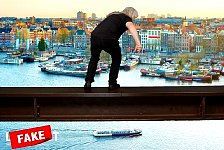 |
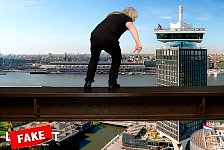 |
 |
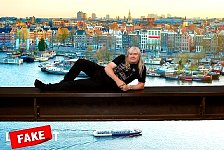 |
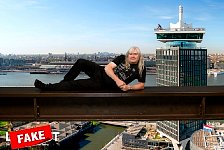 |
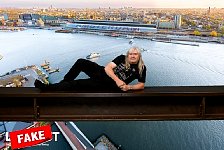 |
But the A'DAM Lookout and the swing there weren't the main reason to go to Amsterdam (I only found out about them when I had already booked the accommodation and was looking for something to do during the day.)
And as cool as it looks, the 'Eye' Film Museum, wasn't the main reason either.
I went to Amsterdam for this.
Another harbour crane.
The concept is similar to the one in Harlingen. But the execution is vastly different. Which proabably has to do a lot with the environment.
Amsterdam-Noord is hip and trendy and on the verge of becoming dull and (even more) expensive. Especially close to the main waterway, the Noordzeekanaal.
The story is about the same as in many other cities that had large industrial areas for industries that fell into decline, while the city prospered.
In Amsterdam, the side north of the Noordzeekanaal used to be industry, ship yards and other port-related activities. And when these fell into decline, the derelict places (and reasonable rents) attracted the artsy, hip crowds. And the place became trendy.
After a while, the wealthier creatives and professionals followed, and currently there's a building boom going on, putting up expensive apartment buildings. There are frequent ferry services over to Amsterdam-Central, so it's an attractive place to live, with good connections to the center.
But at the same time, the cheap, artsy, derelict areas are shrinking. And in about a decade, there'll probably only be bank managers living there and the art scene will have moved on.
And the Faralda crane is right in the middle of it.
Right now, it's in a former shipyard. The shipbuilding and dry dock company went out of business in 1984 and with not much else happening there, was around 2000 (with official blessing - I don't think there have ever been squatters) taken over by a group of artists.
The former company building of the NDSM is now a shell that houses individual ateliers, arts projects, a museum and small theatres.
The slanted ramps, which were once used to for ship launches, are now used by skaters and skateboarders.
There's a kind of communal garden in the outside area.
And, for no plausible reason, a greenhouse out in the water.
The trams standing around make even less sense.
Obviously, there's also lots and lots of neat graffiti.
For those artists with a bigger budget, there's also the neon equivalent of graffiti tags.
At the moment it seems at the point where it has become established enough to become interesting to outsiders (as opposed to a closed community of artists), but still not as commercialized that the main income is from a gift shop selling t-shirts.
In any case, it's a cool and interesting place. (Or, given my complete ignorance of trends in the creative and arts world, it probably has been a cool and interesting place a decade or two ago. Are graffiti and skateboarding still cool? It doesn't really matter, though. I liked the place. I probably will dislike the way it will look in five years, though. Especially looking at the number of construction cranes all around the area.)
So this is the place where the Faralda Crane Hotel is located.
The entrance, appropriately, guarded by a graffiti heroine.
The crane is a fair bit larger than the one in Harlingen and houses three apartments, each having two levels.
I was staying in the highest suite, the 'Mystique'.
The lower level of the 'Mystique' suite is, essentially, the living room. (It also houses the shower and the toilet, though.)
The upper level houses the bed and the bathtub.
The 'style' is a mixture of a lot of things, in an obvious attempt to be hip without becoming boring by adhering to one common 'look'.
The atmosphere is more like entering the place of an eccentric person, who has collected unusual things and disregarded conventional rules of "what fits together with what", than that of a 'designer suite' that has been created to provide a stylish consistent environment.
Although, as with any place that's cool, there's a lot of black involved.
In any case, the semi-spherical chair hanging from the ceiling is fun to sit in. Regardless on whether it's stylish or not.
The original plan was to follow a night high up in a crane and a second night even higher up in a crane with a night at an even higher location in the Netherlands (although I had run out of cranes, so I had to select something else).
But the place was booked solid the next night (which occurs often, given that they have only to rooms to rent), so I had to find something interesting to stay the next night.
So I did a side trip to Belgium.
Before I checked into my accommodation, I went underground in Belgium to compensate for all the 'high up' things I did so far.
Well, not really. It's not like had planned it as an 'sleep in high places' vacation. Originally there was only the Zeppelin trip. And when looking for something interesting to stay, I found out about the portaledge. I knew that there was a crane hotel in Amsterdam. I had considered to stay there one day, but when I googled for it, I learned about the crane hotel in Harlingen. So I thought "Why not stay there as well?" Admittedly, the next place I was going to visit in the Netherlands (after the detour to Belgium) was specifically chosen because it's the highest place to stay in the Netherlands. But, as a song lyric had it: "I had no idea where I was going. No overall plan...I started to make little decisions, minute after minute...in retrospect it looks like I always had a plan with a start, a middle and an end. A random walk that ended up with taking me somewhere I wanted to go." It somewhat seemed fitting after all that 'going up' to go underground. The real reason was that I was looking for something to fill the afternoon before checking in to my next accommodation. And a cave was nearby.
(Although there was one 'altitude' related thing that I had considered once a pattern seemed to emerge and I knew I would be in Amsterdam. I found out that Amsterdam has the official 'sea level' marker. Similar to Greenwich having the official 'zero degree longitude' and Paris having the official (physical) kilogram (yes, I know that since 2019 this is no longer the defining kilogram). When references are made to 'altitude above sea level' (at least in Europe), they are in relation to a marker in Amsterdam City Hall. It would have been fitting to visit there between the 'high' and 'below' parts of the trip. Also because I have been at Zero Latitude and Zero Longitude and it would have been nice to complete the triple by adding Zero Altitude. But the place is currently closed, with no known date for re-opening, so I could not visit it.)
The Hotton Cave is a bit unusual for a showcave.
Often the main attractions of show caves are the stalactite (and stalacmite) formations. Cave that don't have exciting examples of those are mostly reserved for speleologists, it's rarely worth doing regular guided tours in them. There are exceptions of course. Caves that have other unusual features, like an underground river, glowworms, historic cave paintings or ice caves. Or places where the cave is the only one around, so it's better than nothing.
While Hotton Cave has a few limestone formations, they are, even for that area, not exceptional.
The interesting thing about the cave is its unusual shape. The first parts are the normal washed out and eroded passages. But at some point it opens up. Not into a large, rounded hall, but into something that looks like an underground canyon.
The reason for that is a bit unusual. Rock sediments tend to come in layers or 'strata', which in most cases are horizontal layers. That area, however, was a tectonic collision zone a few hundred million years ago, which pushed the ground up and caused the layers being almost vertical in places. And when an underground river tunnelled its way through the mountain, the cohesion of some layers with the layers next to them was no longer sufficient to hold them in place. And a whole section of the inner mountain crashed down, like playing cards dropping out of their box if you don't press hard enough on the sides.
After the tour I went to my home for the night - a Trojan Horse.
I am not sure why they built a Trojan Horse in Belgium. Building one in Turkey (near Troja) or in Greece (as the Greek were the legendary builders of the horse) would seem more appropriate. But then again - why not? I was glad that they did it.
In some aspects the horse reminded me of the crane apartment in Harlingen.
It would have been enough to build the exterior to attract tourist. They could have stuck a regular bed and a table inside and probably have the same number of visitors. (I assume that almost everyone goes there to be able to say that they have spent the night in a wooden horse. The actual quality of the accommodation presumably has little to do with it.) But they put in lots of effort into the interior and added small details. So it feels more like a labour of love (or long winter nights with nothing else to do) than a means to make money from tourists.
I'm not entirely sure why the interior design featured so many sea horses.
My cynical self suggests that this might be because fish tails are easier to do in glass than horse legs. But there might a deeper reason for this. Maybe it commemorates the nautical expertise of the Greek building the horse.
The basic layout of the horse was this:
The lower level housed the main bed, the toilet, the shower and the wooden bathtub (it may be wooden, but it has whirlpool functions...)
The upper level had two bunk beds, a bench, a table, the 'kitchen area' and the balcony.
Why does a Trojan Horse need a balcony? I'm sure that Homer didn't mention it (but then, he forgot to write about the bunk bed, the shower and the fridge as well), but that's how I got my breakfast. Due to corona regulations they didn't serve breakfast or deliver it directly, but put into a basket and put that on the end of a rope. So I went on the balcony and winched it up. Of course, I could have simply gone outside and taken the basket from the hook (especially as the weather was fine and I carried the basket downstairs to have breakfast outside). But where's the fun in that?
The upper level also has a small staircase that takes you inside the horse head.
This is not simply a nice lookout over the countryside. You can also make the horse nod.
Another example of an unexpected bonus. I didn't know the horse could do that, so it didn't affect the decision whether to stay there at all. I didn't find out until I sat there, looked out at the countryside and wondered "What does this lever do?"
(Well, technically not that lever, as that was the one for the drawbridge, but I don't have a good picture of the head-nodding lever.)
To anyone wondering: "If I didn't know what the lever did, why did I push it?" The answer is: You don't understand scientists. (Reference)
And, as I mentioned the drawbridge lever: There was a drawbridge at the horse's backside.
And that's how it looks in action.
After the short detour to Belgium, it was time to drive back to the Netherlands.
There is an observation tower in Rotterdam, called the Euromast.
It looks a bit like a TV tower, but it has never been one. The designer planned it as an observation tower for a gardening festival, back in 1960. There's a landscaped park right next to it. The basic idea was that people could see it (and the rest of Rotterdam, presumably) from the Euromast. It was the highest building in the Netherlands, back in its day, but then various buildings exceeded its height. So they added a spire on top (with a panoramic elevator going around it) in 1970. And it remained the highest building in the Netherlands ever since. (Although, it should be noted that 'building' has a specific meaning in this context. Essentially it covers places that have offices or residential areas. It specifically excludes things like TV towers and other technical structures. So the Euromast is not really the highest thing built in the Netherlands. There are a number of broadcasting towers that stand taller than the Euromast. But the significant thing is that you can't rent a room in them.
There are two suites at an altitude of roughly a hundred meters over Rotterdam, named 'Heaven' and 'Stars'. I was staying in 'Stars', the smaller of the two.
The suites are at the same level as the observation platform. To be specific, the observation gallery goes right around the two suites (the restaurant is one floor further down). So you get, essentially, the same view that the visitors to the observation platform get. (Although everyone can, of course, also take the panorama elevator and look down from 185 meters.)
(The room panorama picture makes the window front look flat - in reality, the window front follows a curve.)
It is important to remember that the windows are regular windows - so people outside can also look in.
When using the toilet, it's a good idea to close the window blinds.
Of course, it is also possible to close the curtains on the windows of the main suite, but it seems a bit strange to do that. There's little point in renting a suite with a view and then not having a view. (And after 10 pm, the tower is closed for the general public, so you can lie in bed and enjoy the view without people staring at you.)
After settling in, I went to the observation balcony outside and looked at Rotterdam from above.
I found it somewhat odd that the floor next to the railing of the observation platform was slanted outwards.
If you drop your keys or your phone, there's a good chance that it will land on the slope and you can watch it plummet a hundred meters. Better be careful...
From the tower, it was interesting to observe the traffic patterns at a canal lock below.
I never gave any thought to it (and often canal locks are in somewhat remote places where there's not much traffic), but it's obviously an issue with a place like Rotterdam, which has busy ship and car traffic. Blocking a busy road every ten minutes to let a ship go through will lead to traffic jams.
So they built roads across both sides of the lock. As at least one side of the lock is always closed (if both sides were open at the same time, it wouldn't be much of a lock), there's always an open road available and the cars can be directed accordingly
Presumably, it's not a thing that comes up often - probably even in road-planner seminars, it's not a regular topic - but it's a clever solution of a problem, even if it never occurred to me that such a problem existed.
Since I was staying at Euromast anyway, I didn't bother looking for restaurants in Rotterdam. I simply went a floor downstairs to watch the sunset and eat at the restaurant there.
Afterwards I took some pictures of the Rotterdam skyline at night and went to sleep.
Unfortunately, I have no idea what caused the bright glow, visible in the last picture.
It's not the sun, as it's wrong direction. Given the relative locations of the Euromast and the Erasmus University Medical Center (the tall white building in the middle of the picture), it might be Amsterdam. But while the direction fits, it's about 60 km away and the lights don't look that far. There's a sports complex named Langepad in that direction that might have flood lights, but it's unlikely that they had anything going on at that time in the night. I think the likeliest explanation is that there are some large greenhouses in that direction, as those are sometimes lit at night to increase the efficiency of food production.
My next overnight destination was less than 30 km away, so I had some time during the day for other activities than driving.
So I drove to a suburb of Rotterdam to look at some bridges.
They weren't particularly tall, didn't span any significant rivers and weren't movable or in some other way interesting from a structural, technical or statical point of view. In fact, there were simple car or pedestrian bridges crossing a small channel around a residential area.
But they were a bit smug. And exactly the things that knowing about makes you unpopular at pub quizzes.
And all has to do with money.
When they designed the Euro banknotes, they decided to use the same banknote design all over the EU zone. (Unlike the coins, where every county has an individual design on the back. Only the front side with the coin denomination (which is, annoyingly, numismatically called the 'reverse') is the same for all issuing countries, but the reverse side (the 'obverse') is different for each country.
They wanted to avoid that for banknotes, so they needed a design acceptable for all EU countries. When they decided to put images of bridges on the backside of the banknotes, they didn't want to use real bridges, so that no country would be offended because their favourite bridge had been left out. So the bridges have been drawn to represent various styles, but not any specific bridges.
So the correct answer to the question "Where is the bridge from the 50 Euro banknote?" in quizzes used to be "Nowhere".
Until someone in the Netherland (presumably) said "These are nice looking bridges. Shame they don't exist. Why don't we build them? Would be cool, wouldn't it? Take that, pub quiz question setters!"
And they took the bridge designs from the banknotes and built them for real. (While there seven banknotes that feature bridges, there were only six bridges built. They cheated a bit by putting different facades on the side of one of the bridges, so the "5 Euro Bridge" and the "20 Euro Bridge" are the same bridge, seen from different sides.)
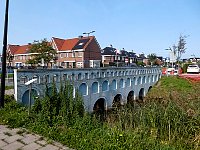 |
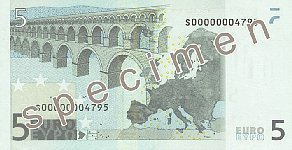 |
 |
 |
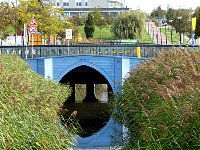 |
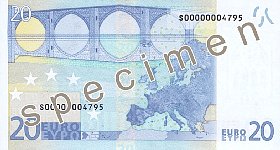 |
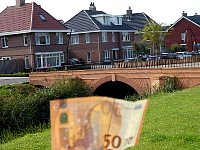 |
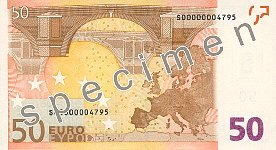 |
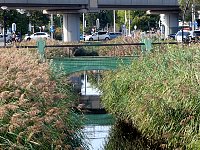 |
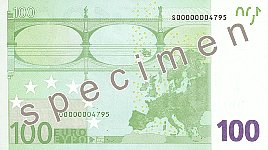 |
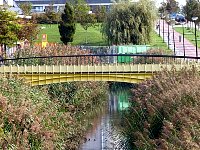 |
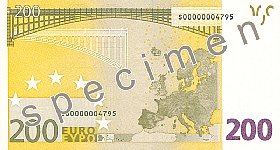 |
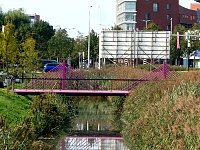 |
 |
As a result of this, there can now be long discussions on semantics in quiz questions, for example on the meaning of 'shown' in "Where are the bridges that are shown on the Euro banknotes?", since the banknote drawings precede the bridges.
But, as a radio show once established, "And people who trot this sort of stuff out to dispute the answers in pub quizzes are as they always have been... But that's all we got time for."
After seeing the bridges, I drove on to see some cars. Specifically, the ones in the Louwman Museum.
In some respects, the place looks more like a shrine to old cars than like a museum.
Especially in the first section, the cars are presented more like jewels than cars.
Each one in its own black box on a white presentation sheet, with lighting designed to make every facet shine.
After a while the presentation becomes a little bit more like in other car museums and you sometimes see groups of cars standing together in a single room, but most of the time the cars are not only shown individually, but within a specifically designed environment.
While there are some regular production cars on display, the focus seems to be on oddities and 'one of a kind' models.
These include early versions of electrical cars (showing that the idea is not recent at all).
There are also unique modifications.
Cars that belonged to famous persons...
(Note the fake round front light on Elvis' Cadillac, which is nothing more than a short round tube in front of the regular lights.)
And there some cars that have been modified for films, including one of the two or three (depending on what criteria you use) "effect" Aston Martin cars from "Goldfinger". (They used more cars during the filming and for promotion, but most of them didn't have the gadgets, like the bullet shield, the revolving number plate or the hidden gun ports behind the turn indicators).
Outside, they had a somewhat cute rule about parking.
Below the museum is a carpark and visitors are expected to park their cars there.
But if your car is older than 40 years, you are allowed to park directly in front of the museum (and for free).
My next stop was at the coast of Scheveningen, part of The Hague.
The accommodation itself was neither particularly unusual or high up.
I was staying in the pavilion building at the Scheveningen Pier.
My room had a good view of the beach and the Kurhaus of Scheveningen, but there wasn't anything special about it.
The whole trip to Scheveningen was initially nothing more than a filler activity.
I had booked the room in the Euromast and had intended to drive back to Cologne after that. But then I looked closer at the Euromast website and noticed that they offered an activity that seemed interesting. But that activity was only offered on weekends.
My night at the Euromast was from Thursday to Friday, so I needed to find somewhere to stay for one more night. And it couldn't be that far away, as I needed to be in Rotterdam on Saturday morning and I didn't fancy getting up somewhere at 4 am and then drive for a couple of hours.
So The Hague (or Scheveningen, which is a part of it) seemed to fit the requirements. With only 30 km to drive, I wouldn't have any problems with getting to Rotterdam in time.
And while Scheveningen didn't have unusual sleeping options, they offered an unusual dinner option.
But first, I had a quick ride down the local zipline.
It isn't particularly long or fast. It goes from the bungee tower at the end of the pier to (roughly) the other end of the pier and provides a good (but short) view of the pier on one side, the Ferris wheel on the other side and the Scheveningen beachfront ahead.
Zipliners are asked to grab the handles when approaching the end of the line and make sure to move the head to the side, to avoid hitting the carabiner with the head when you hit the brake. Hence my somewhat cramped style towards the end...
Afterwards, I spent some time walking down the pier and the beach promenade.
There's a somewhat surprising collection of bronze statues by Tom Otterness at the beach boulevard.
They represent scenes from fairy tales. Most of them look cute at the first glance. Characters have large, round heads and, quite often, arbitrary sizes. Many a large character has a smaller character next to it, with an even smaller character crawling over the shoulder or sitting on the ground nearby.
But on closer inspection, the scenes depicted are often the nastier moments of the story. If you look for illustrations for the Hansel and Gretel story, most of them opt either for the gingerbread cottage or the destruction of the witch at the end. The scene chosen here is the moment where they are imprisoned in the cage. And while Gulliver being tied down is probably the best know moment in Gulliver's Travels, there is an unnecessarily unpleasant taunting by a character holding the key behind its back. And the Swedish story "Lars, My Lad!" has probably nicer moments than the one where the duke gets hanged. And the binding of the lion (from the "Lion and the Mouse" fairy-tale) seems surprisingly severe.
There was an interesting update to one of the figures. Hans Brincker (the boy who stuck his finger into the dike) was originally standing next to a stone wall. But that has been replaced by a metal wall since, so they amended the new wall, so that the underlying story would remain the same.
With the North Sea well protected from incoming water (the way the wall at the beach boulevard is located, any water would flow out towards the sea - but given that it's at the side of a building, there might as well be a sewage pipe behind it, so maybe it's a good thing not to let it flow...) it was time for dinner.
I had mentioned the Ferris wheel in passing.
And that is where I had dinner.
The procedure is reasonably simple.
Before entering the Ferris wheel, you make your selection of the main course, the desert and the drinks. (The starter is the same for everyone.) Then they put a table into a cabin, add the starter and you're ready to go.
If the next course is ready, they open the cabin and put it on the table (taking the empty crockery out, of course)
The wheel doesn't run continuously, so they don't have to dash and serve the food to a moving cabin. It's stops (very smoothly) approximately every quarter turn to let regular passengers enter their cabins and they use these stops to serve food. (There are other Ferris wheels that run continuously and passengers enter and board the cabin while it is moving, usually while being an a conveyor belt with matching speed. But this one has platforms that provide access for six cabins when they are on the lower end of the wheel. That's also why the wheel does only approximately stops every quarter turn. As there are 36 cabins, doing exact quarter turns would leave 12 cabins inaccessible and doing a stop every sixth turn would be too much stopping. So they sometimes stop a few cabins earlier or later, but that seems to be done pretty much on a whim. I didn't note and specific pattern to it, like always turning eight spaces or something like that.)
I had booked my dinner starting at about half an hour before sunset, so I had a good view with all sorts of light conditions, from afternoon sun to sunset glow, after dusk and finally at night.
As the weather was fine that day, the sunset that evening was also nice.
The whole dinner lasted about 90 minutes and included eighteen rounds on the Ferris wheel.
(The GPS track shows the overall altitude shifting a bit. While it looks a bit as if the Ferris wheel was slowly sinking into the sea, it obviously wasn't. But it's still useful to see the number of rotations and stopping phases.)
Next morning, I drove the short distance over to the Euromast in Rotterdam.
However, there was one significant change from the way it looked the previous morning.
A couple of ropes were hanging down from the observation platform.
And, a bit irritating, due to the wind, they weren't hanging straight down, but curved quite a bit to the side.
On most weekends you can abseil (rappel) from the viewing platform of the Euromast. Going down a hundred meters on the rope.
And that was what I came back to the Euromast for.
Even though, from below, the prospect already looked a bit daunting.
That the dark clouds looked ominous and that from this angle the Euromast looked a bit like a praying mantis did really help to inspire confidence...
But then again, that's no reason not to do it.
So I took the elevator up to the observation balcony and put on some climbing gear.
The set-up is surprisingly simple. There's a double rope for each climber (and I'm using the term climber here because it's simple and I don't know whether 'abseiler' or 'rappeler' are in common use or even proper nouns, even though climbing is very specifically not what you do) and a single, thicker, rope for the guide.
The climbers have an 'eight' and the double rope is fed through that eight. You wear some heavy builder's gloves, go over the edge and that's more or less it. (It's a bit more technical for the guides. They don't use 'eights', but a descender (a Petzl I'D, if I have seen that correctly) and always stay above the higher of the two climbers. The idea behind this is that, if there is any problem, the guide can always go down to the climber in trouble (you really don't want to go up, if you can help it) and assist. And with a proper descender, not only can they stop at any point (and don't worry about sliding down while helping someone), but, if needed, even attach a climber to themselves and bring that climber down with them.
Having to rely on the eight as the only thing that keeps you from plummeting down a hundred meters is somewhat worrying, but that's more due to 'helpful advice' from climbing parks than a serious risk. The 'eights' used here (and in most climbing parks) are made from aluminium. And every climbing park tells you to be careful with their aluminium carabiners and never let them fall on solid ground or bang them together (and, if you do, let them know immediately, so they can bin those 'biners). The reason given is that aluminium can develop 'micro fractures'. So while the carabiner might look fine from the outside, it might no longer be structurally sound inside. And when it encounters sudden strain, it breaks without warning.
Which is something you don't want to think about too much when hanging up in the air, with the 'abseil eight' being a 'single point of failure'.
When I did an abseil in Brazil in 2015, they used a 'steel eight' for precisely this reason. Steel will deform a lot before breaking, so if the 'eight' has been badly mistreated, you will see that. Steel gear is rarely used in 'proper' climbing, as it is heavy and nobody wants to carry steel gear up a mountain. But for a simple abseil, where weight doesn't matter, it is a practical alternative. (In Brazil, they also used a double rope through the 'eight', but also had an additional 'belay' line from above, for added safety. So even with a breaking eight, I wouldn't have fallen down.)
But in the real world, aluminium 'eights' are safe. I had talked to the guy who built the 'Via Ferrata' in Brühl and it turned out that, when he's not designing or operating climbing courses, he does testing of equipment for mechanical failures. And 'micro fractures' are not a topic to worry about. Yes, they exist. And yes, they may reduce the safety tolerance of the gear a bit. If you are trying to lift a two-ton car and it slips a bit and there's suddenly a 'shock load' of ten tons when the rope tightens again - yes, the carabiner could break. But it's essentially impossible to damage a carabiner sufficiently to break under the weight of a person without showing extensive damage on the outside.
In short - no need to worry about that.
After the eight was clipped into the rope, it was time for the technically hardest part - getting over the balcony railing!
And I'm not joking about this.
The railing is about chest high (as they obviously don't want any of the regular visitors to fall over the railing.
And it's not easy to get over it, as they don't provide a box or a stepladder.
You need to go over carefully and controlled, as the idea is that you then stand on the outside rim. Going over too fast and then sliding down on the other side is strongly discouraged.
But in the end I've made it (with the guide giving me a leg up) and I was standing on the outside of the observation platform.
It was interesting to note the little rim outside. I was wondering whether that was there to catch items that visitors had dropped and have been sliding off. But it was to narrow for that and most phones or wallets would probably have enough speed to fall past it. Turns out that this was the groove in which the window-cleaner's basket was running to allow access to all windows of the restaurant.
Then it was time to lean back.
And lean back some more.
The reason for leaning back is twofold.
Firstly, directly below you is the Euromast restaurant. And they don't like you walking on their windows. So you are not supposed to simply walk down.
And, secondly, at first the rope is still a bit away from the building. If you'd simply let go with your legs, you would bang against the building and hurt yourself or let go of the rope.
So you lean back farther and farther, trying to keep your feet where they are, until you are almost hanging upside down. At this point the rope (at least the part above you) is hanging almost straight down. And your body is well below the outermost point of the tower. When your feet now lose contact with the tower, they drop down, swivel you in the proper abseiling position and you are clear of any obstacles.
Incidentally, as that gives a bit of an indication about the wind, the lower end point of the rope is in the middle of the light grey 'bridge' on the left side of the image. If you follow the rope as it leaves my right hand, at about the middle between my hand and the edge of the image, there's a little white banner on the side of the 'bridge' (not the street lamp that is standing on the green - the little white thing to the right of it). That's where I was going - which is not at all where my ropes seem to be pointing. So, thanks to the wind, I was taking a slight detour going down the rope.
I then got into the proper abseil position and was on my way down.
It turned out that abseiling down a tall building is more strenuous than I expected.
I had assumed that (like on the wallrunning a week earlier) gravity was on my side. And that I would simply slide down the rope and all I had to do was to regulate my speed.
Not so.
The thing about abseiling with an 'eight' is that you control your speed by increasing tension on the lower end of the rope.
The more you 'pull' on the rope, the more friction in the 'eight' and the slower the descent.
But the weight of about a hundred meter of double rope below you provides quite a bit of pull already.
Even with my right hand fully open, I didn't move at all. (I probably could have taken my hands of the rope completely and stayed where I was, but hanging one a rope a hundred meters above the ground, I wasn't going to test that.)
To go down, I actively had to feed the rope through the 'eight'.
I am aware that the use of 'pushing a rope' for an obviously futile activity has a different reason. But the phrase felt appropriate anyhow.
As a result, going down from Euromast wasn't that easy.
It wasn't that hard either. But after 30 meters or so, my right arm was getting tired. So I gripped the rope below the 'eight' with the left hand for safety and shook out my right arm a bit to loosen the muscles. Worked well. After that, I did a short 'relaxation' stop every ten meters or so. Which also helped to provide a short 'sightseeing stop' every now and then.
I was down to about 30-40 meters above the ground (a small bit above the oddly shaped part that protrudes from the lower part the tower) when I started sliding down the rope on my own, so the last bit was a lot easier to do.
Then I was back on solid ground.
A bit exhausted, but happy.
And with the entrance ticket still in my pocket.
Which is important - they stress that you can have nothing in your pockets when you abseil Euromast.
So you leave all your stuff with the people on the observation platform.
The only thing you take down with you is the entrance ticket.
Which you shouldn't lose, as you need it to get back in and take the elevator up to where your stuff is located. And if you lose it, you won't have any cash or credit cards with you to buy a new one. So it is comforting to find, when you reach the ground, that you still have it.
Realistically it doesn't matter, though. You are still decked out in full climbing gear, so if you tell the people at the entrance that you abseiled and lost your ticket, they are likely to believe you. Additionally, the guide will reach the ground a short while after you and go in with you, so you have someone to vouch for you. But it still feels proper to have the ticket with you.
And this is pretty much it.
Fetched my stuff and went to the cafe to relax a bit. (I still felt a tiny bit overexcited and didn't want to get into the car and drive directly afterwards - although in retrospect it's strange to go there and drink an espresso and a bottle of (high-caffeine) cola in order to calm down. It helped, though.)
Then I drove back to Cologne, had dinner with Claudia and Roberto, vacuumed a dozen dead wasps away, had a good night sleep and flew home the next day.
Arriving there, I waved a last goodbye to Tegel airport, which is due to close in six weeks, so it's unlikely that I will ever arrive or depart there again. And went home.